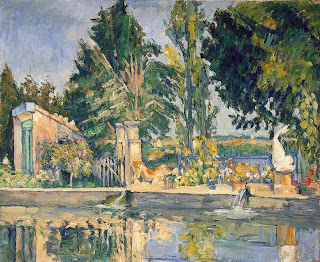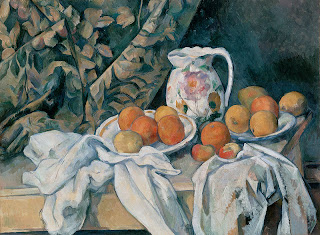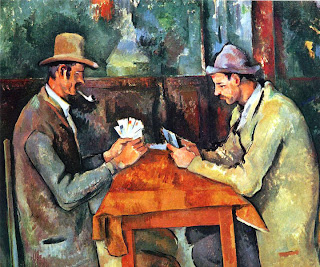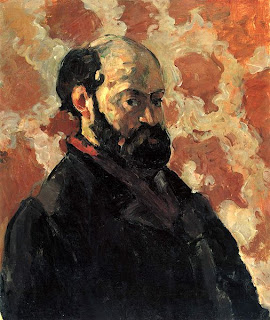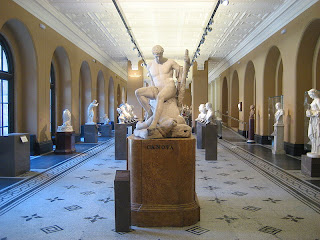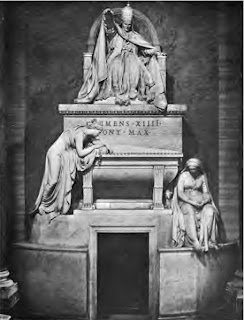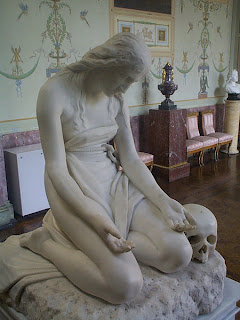I didn't realize Cezanne was post-impressionism like Van Gogh (I didn't realize Van Gogh was either until very recently). He was the "father of us all" according to Picasso and Matisse because he layed the foundation for the drastic change in art of the 20th century. He was caught between the Impressionists and the new lines of modern art.
I came across this quote on wikipedia and could not think of a better possible way to articulate his visual style.
"He used planes of colour and small brushstrokes that build up to form complex fields, at once both a direct expression of the sensations of the observing eye and an abstraction from observed nature. The paintings convey Cézanne's intense study of his subjects, a searching gaze and a dogged struggle to deal with the complexity of human visual perception."
I think that is an amazing way to describe artistic technique.
Cezanne's quote below made me tear up. I don't know why I am so emotional. Weird.
"I want to make of impressionism something solid and lasting like the art in the museums."
It's pretty amazing to think of someone on the brink of something. Following his heart. Not knowing for sure if he will succeed but knowing he is driven to keep trying. And to know now, with reflections on history aiding us, that it was an overwhelming success, is really cool to me.
His early work is characterized by heavy figures in nature and his later work has a matured lighter feel. His work also has a architectural feel to it. Beautiful stuff. I am finding that the art that I've grown up around, mom's paintings and older relative's paintings are akin to post-impressionism, and have really inspired my technique.
FUN

